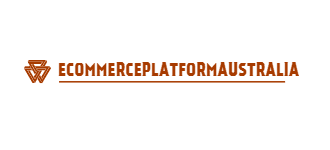In today’s competitive business landscape, ensuring product availability is crucial for maintaining customer satisfaction and driving business success. When managing inventory, two terms often come into play “backorder” vs “out of stock.” Understanding the differences between these terms and how to manage them effectively can significantly impact your business’s reputation and bottom line. Let Gritglobal help you!
Definition and differentiation between backorder and out of stock
Businesses may face two different situations when it comes to product availability. A backorder is when a client orders a product that’s currently out of stock but it will soon be available again. The customer’s request is basically accepted and will be fulfilled once the item becomes available.
Out-of-stock, on the other hand means that the product in question is not available at this time and can’t be delivered immediately. A customer who attempts to buy an item that is out of stock will usually be informed by the seller about the unavailable product and the inability to complete the transaction.
It is important to understand the difference between out-of stock and backorder in order to manage customer expectations.
Managing Backorders and Out of Stock Situations
Strategies to prevent and handle backorders and out-of-stock occurrences

Any business should make preventing backorders or out-of stock situations a top priority. Implementing proactive inventory management can help you reduce these situations and provide better service to your customers. Consider these strategies:
Plan and forecast: Utilize historical data, market trends, and demand-forecasting methods to accurately predict the product demand. Stock up on enough product to meet customer demand.
Supplier Relations: Maintain regular contact with your suppliers and develop strong relationships. You will be able to maintain a steady supply chain. Avoid delays to reduce the risk of running out of stock.
Safety stock: Maintain a safety stock level to act as a buffer in case of unexpected surges in demand, or supply chain delays. It is important to be able to fulfill customer orders during high-demand periods.
Effective communication with customers and proactive inventory management
Here are some tips to assist you.
Transparent communication: Tell your customers about any delays. Let them know when the product will be available. This helps manage customer expectations and builds trust.
Provide alternatives and similar products that are currently in stock. The customer is then able to consider other options. This prevents them from looking elsewhere for the desired product.

Efficient order fulfillment: Once the product is back in stock, prioritize fulfilling backorders promptly. Keep customers informed about the progress of their orders and provide regular updates until their items are dispatched.
As the exclusive BigCommerce Backorder application, BackOrder offers a comprehensive set of features and functionalities designed to streamline the backorder process and enhance the overall shopping experience for customers.
Conclusion
Understanding the difference between product availability situations such as “out of stock” and effectively managing them is crucial for businesses. If you need further assistance or guidance on managing these situations, please free to contact us.
Source: https://gritglobal.io/
►►►► Our related services: global supply chain, best ecommerce platform, b2b ecommerce platform, digital transformation projects, core banking platforms, digital banking platforms, case for cloud consulting analyst, ai throught the cloud, agentic ai, phần mềm quản lý doanh nghiêp, nền tảng quản trị doanh nghiệp, phần mềm nhân sự, phần mềm chấm công, phần mềm tính lương, phần mềm CRM, phần mềm KPI, phần mềm OKR, Phần mềm quản lý dự án, App chấm công, Cách tính lương, Ftrip Viet Nam, vietnam itinerary 2 weeks, north vietnam 2 week itinerary, northern vietnam 2 week itinerary, vietnam luxury tours, custom travel itinerary, best tour operators in vietnam, Vietnam Photography Tour, Photography Tour Guide Viet Nam
